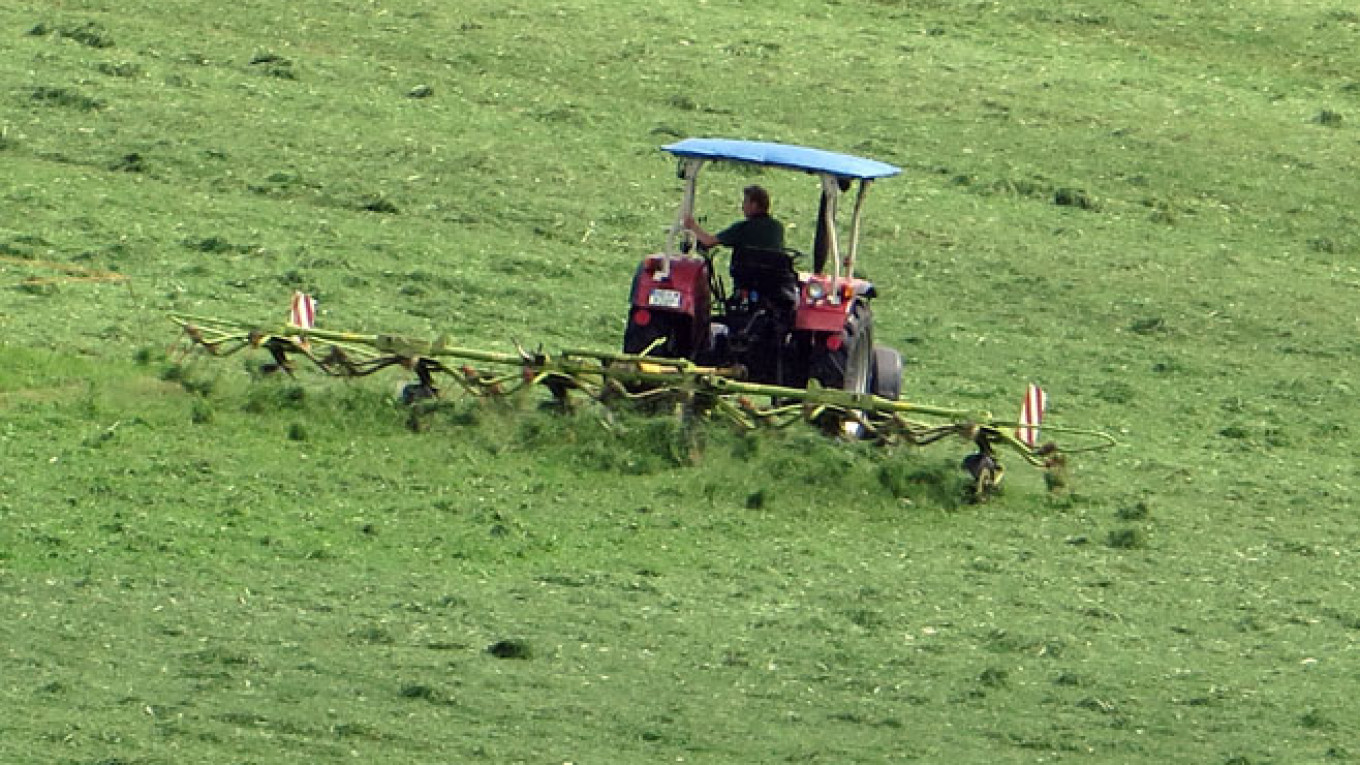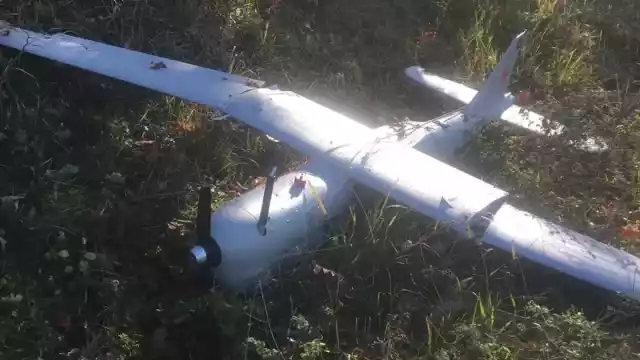Russian politicians have declared the recent bans on Western imports a golden opportunity for Russian agriculture — but farmers and economists warn that upping production is a question of years, not months, and closing the market will not be enough to solve its problems.
Against a background of international friction over the crisis in Ukraine and increasing economic isolation, the question of where Russian's food is produced has been painted as a matter of national power and sovereignty.
"We are the kind of country, the kind of government, which can and should feed itself," Prime Minister Dmitry Medvedev said earlier this week.
The bans — which target imports of meat products, fish, fruit, vegetables and dairy products from the EU, the U.S., Australia, Canada and Norway — will ultimately serve Russia's farmers, he added, before concluding, "We are well-placed to fundamentally change the situation in agriculture."
At first glance, the sudden cancellation of about $9 billion in food imports could look like a windfall for an uncompetitive agricultural sector suffering from two decades of underinvestment.
But increasing Russian agricultural production will take at least five years, provided there is substantial investment and good state policies, according to Natalya Shagayda, director of the Center for Agricultural Policy at economic research university RANEPA.
The import bans, meanwhile, will only last a year unless the government renews them, and could be lifted at any moment if relations with the West clear up.
"Creating a driver for growth in domestic production is a decidedly secondary aim [of the bans] … which has most likely been somewhat exaggerated," said Maxim Klyagin, a food market analyst at Finam Management.
In the short term, domestic producers will only be able to replace a "relatively small part" of the imports lost, Klyagin said. The main beneficiaries of the ban will be exporters in the Russian-led Customs Union, Latin America and the Pacific Rim, who can boost exports to Russia free of European competition.
Looking ahead several years, domestic producers could replace imports — but only if the current limitations remain solidly in place and are supplemented by other state supports, he added.
Government Support
Though the bans could expire at any moment, the government has seized the opportunity to announce a renewed commitment to developing domestic agriculture.
Medvedev last week called for amendments to the state's development plan for the industry with a focus on maximizing the self-sufficiency of Russian agriculture.
The current plan offers no mean support to agriculture: a total of more than 1.5 trillion rubles ($42 billion) in state funds has ben earmarked for supporting farmers between 2013 and 2020.
Agriculture Minister Nikolai Fyodorov said last week his ministry believed that agriculture would need an additional 137 billion rubles ($3.8 billion) over the next three to four years.
The program has had an impact, particularly via subsidies that lower the cost of lending for Russian producers, but the basic problems are the same ones that Russian farmers have faced for years.
"It is extremely difficult to compete with foreign producers due to the investment factor in Russia, loans and infrastructure costs are much higher than in Europe and the U.S.," said Artyom Belov, CEO of the National Association of Milk Producers.
Even counting state subsidizes, lending rates are on average between 8 and 10 percent for dairy producers — more than twice the 2 to 4 percent rates seen in the EU and U.S., Belov said.
Moreover, the strained government budget is not the most timely with its payments.
"Reimbursement is always late," said Alexander Kostikov, head of communications at Cherkizovo, Russia's largest domestic meat producer.
Although state reimbursement has brought lending rates down to between 2 and 3 percent for Cherkizovo, the state owed them 1 billion rubles ($28 million) at the end of last year, Kostikov said.
The state's debts to Russian dairy producers also played a part in pushing down production of raw milk in Russia by 6 to 8 percent last year, resulting in a deficit on the market, Belov said.
Dairy
While the ban on goods is "certainly more good than bad" for the Russian market, the milk deficit means that domestic producers will not be able to take advantage of it, Belov said.
"Of course, we would be able to increase our production volumes, but unfortunately we do not have our own raw material," Belov said. Despite a slight recovery in raw milk production this year, it will not be enough to replace Western imports.
So, in the short term, it will be Belarus — already a major exporter to Russia — and countries such as New Zealand, Serbia, Argentina and Uruguay who fill the gap left by Finland and other EU countries.
In the long term, Russian dairy producers need not only some level of protection from foreign competition, but substantial state support to offset the high costs of investment.
The industry requires 600 billion rubles ($16.7 billion) in investment through 2020 in order to expand production to meet government aims of satisfying 90 percent of the population's dairy needs, according to a plan recently proposed by the association.
If the program was accepted precisely as is, it would take five to seven years to "make a breakthrough" on the domestic market, Belov said.
Currently, about 66 percent of Russia's milk needs are met by commercial domestic production, and 78 percent if you include small private farmers, according to the Agriculture Ministry.
Meat
By comparison, Russia's meat industry is doing well. Government support has increased since 2006, bringing moneyed investors to certain branches where quick profits can be turned.
"[The investors] have good lobbyists, they get government money for subsidizing their loan rates. …The growth rates in poultry and pork breeding are enormous," the Center for Agricultural Policy's Shagayda said.
As a result, poultry breeding has shot up in Russia, with domestic producers now satisfying 90 percent of the market's needs, Kostikov from Cherkizovo said.
As for pork, the import ban makes little difference other than securing a place for already booming production. The market expects a 200,000 to 250,000 ton increase in domestic production this year, which "will be enough to cover the market's needs," Kostikov said.
All told, about 70 percent of pork is now produced within the country.
Beef is the weak point, with less than half of the beef sold in Russia produced domestically. Brazil is expected to profit off the ban, replacing formerly hefty imports from Australia.
Small Farmers
Increasing fruit and vegetable production requires a different approach. Most of Russia's fruits and vegetables are produced by ordinary Russians and on small family farms, whose owners have little expertise in lobbying the government.
To increase their production, the state has to redirect aid directly to these small enterprises. There has been some success already in this regard: an initiative to support small milk farmers boosted production 5 percent last year, Shagayda said.
"Increasing private farms' access to support can increase production of vegetables quite quickly," Shagayda said. "But all the same, we are talking about years, not months."
Russia also lacks the storage and infrastructure needed to move beyond seasonal supplies, leaving it dependent on imports during the winter months.
Dependence?
Though politicians are bemoaning Russia's reliance on imports from abroad, this "dependence" is in fact a matter of perspective.
"If you evaluate not only what we eat, but what we export too, Russia's level of food independence … was 89 percent in 2012," Shagayda said.
The issue, then, is whether Russia produces all the food that its own consumers eat. While theoretically it could, this wouldn't do any good for the wider Russian economy. The upside of a globalized world is that each country produces what it can make best and cheapest, while importing what its neighbors produce better.
"One would wish that events could develop normally, so that we would turn to full subsistence only when we have comparative advantages," Shagayda said.
See also:
Emergency Talks to Accelerate EU Response to Russia's Food Ban
Contact the author at [email protected]
A Message from The Moscow Times:
Dear readers,
We are facing unprecedented challenges. Russia's Prosecutor General's Office has designated The Moscow Times as an "undesirable" organization, criminalizing our work and putting our staff at risk of prosecution. This follows our earlier unjust labeling as a "foreign agent."
These actions are direct attempts to silence independent journalism in Russia. The authorities claim our work "discredits the decisions of the Russian leadership." We see things differently: we strive to provide accurate, unbiased reporting on Russia.
We, the journalists of The Moscow Times, refuse to be silenced. But to continue our work, we need your help.
Your support, no matter how small, makes a world of difference. If you can, please support us monthly starting from just $2. It's quick to set up, and every contribution makes a significant impact.
By supporting The Moscow Times, you're defending open, independent journalism in the face of repression. Thank you for standing with us.
Remind me later.






